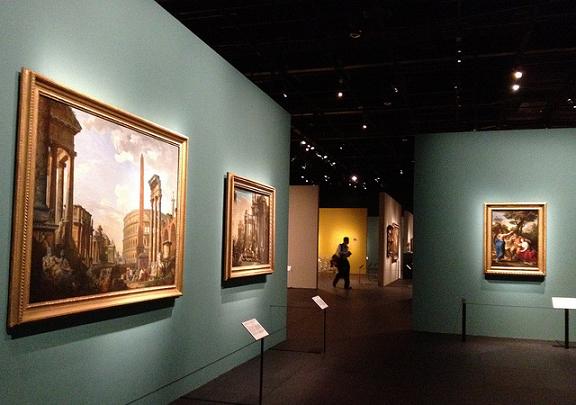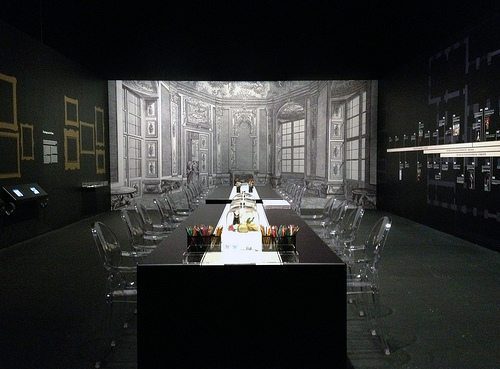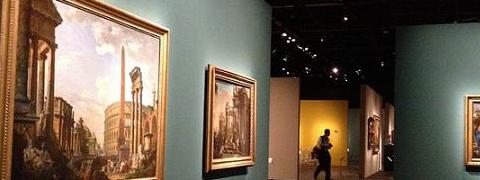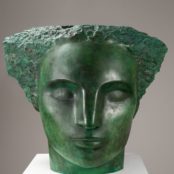[dropcap style=”font-size:100px; color:#992211;”]L[/dropcap]ife imitates art. Recently, it seems to be following a plotline from Allo Allo.
Given that the 1406 artworks (including works by Picasso, Chagall and Matisse) discovered at the Munich flat of Cornelius Gurlitt seems at least partly derived from Nazi looting, it seems a relevant moment to publish a review of the Princely Treasures from the House of Liechtenstein exhibition.
The exhibition, which was scheduled to have been shown at the Royal Academy, never made it to Britain. A portion of the material included was suspected by HM Customs to be, well, let’s just say ‘suspect’.
Nicola Anthony caught the exhibition in Singapore.
Whilst you may usually spot me flitting around the contemporary galleries, absorbing the glow of neon light sculptures or pressing my eyeballs up against a brightly collaged surface, every so often I take a trip back in time to visit the old masters and re-affirm the foundations on which our current artists build their practices.
Renaissance, Baroque and Rococo
Princely Treasures from the House of Liechtenstein is an exhibition selected from the private collection of the Princes of Liechtenstein, packed with opulent pieces from the Renaissance, Baroque and Rococo eras. Surrounding the exhibition is a series of special programmes, from sketching workshops to chamber concerts, and a variety of dynamic and interactive activities and lectures.
Renaissance, Rococo and Baroque are, to many people, quite mysterious terms defining large swathes of antiquity. This is a chance to take a closer, more focused look at the past, find out how it has informed the arts and culture of today, and even discover a few grand treasures from the West which were informed by the ornate artistry of the East.
Being a private collection, this gathering of art reflects the preferences of the Princes like a portal into their historical interests – artistic, political, financial and otherwise. Through a curator’s tour, you can hear the fascinating stories behind how and why each work was commissioned or acquired. Sometimes it can be for love of art, sometimes just for love, but often there are other motivations: to form links with particular countries or individuals, or to illustrate status and taste.
Whilst giving us insight into these art aficionados, there are also obvious downsides to this: A private collection can be very personally motivated rather than seeking to show a representative cross-section of the era, (as with a museum collection), and a few key artists are missing here. However, the Princely Treasures are still quite remarkable and if you glimpse inside this anthology, you can view artworks which you will not experience elsewhere.
Renaissance art characterises a period of rebirth in which artists of from the 14th to the 17th centuries began to master ideas of light, space, perspective, and techniques which advanced their paintings toward a more ‘contemporary’ style. In this era artists integrated art, language, science, observation and invention into their work, the greatest example being Leonardo da Vinci.
Amongst the Renaissance paintings and sculptures at the Singapore National Museum, is Raphael’s ‘Portrait of a Man’, which showcases a bold design and strong colour harmony illustrating some of the features typical of the Renaissance portraits.
However, for me it got most interesting when I entered the Baroque sections, showcasing a grand, elaborate collection of objects d’art and ornate furniture, fanciful paintings and images filled with theatricality.
The Baroque is a pan-European style that dates from 1600-1750. During this time, artists and architects danced over artistic boundaries and threw down their classical rules, resulting in artwork with an emotive and dynamic energy, a flamboyance, and a sense of light-heartedness. The term is thought to have been derived from the Portuguese barroco, meaning an irregular pearl.
 Pietra Dura Ornate Chest, c1620/1623 (Detail)
Pietra Dura Ornate Chest, c1620/1623 (Detail)
New, bold styles
To the contemporary eye, the swirls and elaborate details appear to be the curlicues of days-gone-by: we often forget to remember that in their time they were the new, bold styles. These pieces continue to have the power to enthral. I was particularly impressed by the exquisite high baroque table-stands which were commissioned to become part of the collection, and the Pietra Dura Ornate Chest, in which complex landscape scenes are fashioned from hard stones cut to size, marble, garnets, ebony, velvet and gilt bronze.
Some other notable works from this period include a Canaletto, a Marcantonio Franceshini commissioned by the Liechtenstein family, and Dutch 17th century paintings.
Rich in colours and the variety of fruit and objects, de Heem’s ostentatious Baroque still lifes can appear staged, and the vivid forms are rendered in exquisite intricacy. I was captivated by the detail in the orange, which in its peeling, has acquired an almost cubist, angular appearance. Articulated by a careful use of light, the quivering yellow oysters and majestic ruby red goblet in the centre, his subjects are surrounded by a juicy bounty and possess a tactile quality which engages the senses. De Heem’s work influenced several artists, including Henri Matisse.
 Jan Davidsz. de Heem (Utrecht 1606–1684 Antwerp), Fruit Still Life with Covered Goblet, 17th century
Jan Davidsz. de Heem (Utrecht 1606–1684 Antwerp), Fruit Still Life with Covered Goblet, 17th century
Other must-see paintings are those of Rubens, with a whole room dedicated to him, and also Rembrandt’s ‘Cupid with the Soap Bubble’ (1634).
With characteristic wit, Rembrandt combines the symbolic and the mythic to produce a poignant narrative. The soap bubble is a traditional symbol in Dutch vanitas (a still life with symbolic qualities) and represents the transience of life. Here, it is in the hands of Cupid, the capricious Roman god of love and becomes a symbol of the fragility of love. The modelled form, modulated use of light and shade, rich tactile materials, and warm glowing colours are all characteristic of Rembrandt’s style.
Opulence
The setting for the exhibition in the basement gallery is an interesting choice.  Taken away from the natural palatial habitat where these artworks nestle amongst grand baroque decor, the ‘black-box’ exhibition hall places them out of context: displaced from the space that they are usually one with, in an unfamiliar environment. Does this have the effect of sucking away the historic atmosphere? My senses did register the location as a slightly jarring combination of old and new, however my impressions were still that of awe and gilded opulence.
Taken away from the natural palatial habitat where these artworks nestle amongst grand baroque decor, the ‘black-box’ exhibition hall places them out of context: displaced from the space that they are usually one with, in an unfamiliar environment. Does this have the effect of sucking away the historic atmosphere? My senses did register the location as a slightly jarring combination of old and new, however my impressions were still that of awe and gilded opulence.
Thankfully the artworks spoke for themselves, mounted on deep-toned freestanding walls and emanating a rich atmosphere into the otherwise blank space.
In the final room, we come to the oil paintings from Singapore’s National Collection which draw links to the art of portraiture in Singapore’s historical context, exploring how it was an important representational mode between the late 19th and mid 20th century. The skill in these works varies, and the era is much later than the rest of the exhibit given Singapore’s own relatively recent history.
However, the curator has chosen to showcase some interesting portraits of influential figures – including Harry St George Ord, the first Governor of the Straits Settlements after Singapore became a Crown Colony in 1867; John Fearns Nicoll who governed from 1952–1955 and appointed the Rendel Commission to consider self-government for Singapore; Song Ong Siang, who was the first Chinese to be admitted to the local Bar, honoured with a knighthood in 1936; and Yusof bin Ishak, Singapore’s first local head of state.
The Princely Treasures from the House of Liechtenstein can be viewed at the National Museum of China until February 15
Artwork images: © LIECHTENSTEIN. The Princely Collections, Vaduz–Vienna
Installation-view photography © Nicola Anthony
Nicola Anthony is a British artist known for her public art around the world. Her text sculptures are made of metal, words, memories and narratives. She has worked internationally with NGOs, art institutions, public spaces and cultural research bodies to create art which tells the stories that are often left unspoken.





















